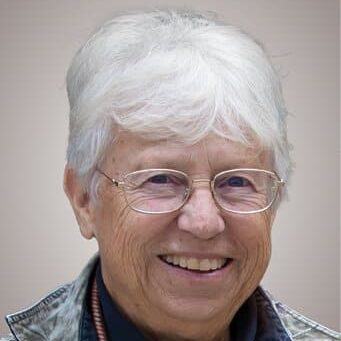


Home » Doing It All – Tracking Puppy Benefits of Early Training
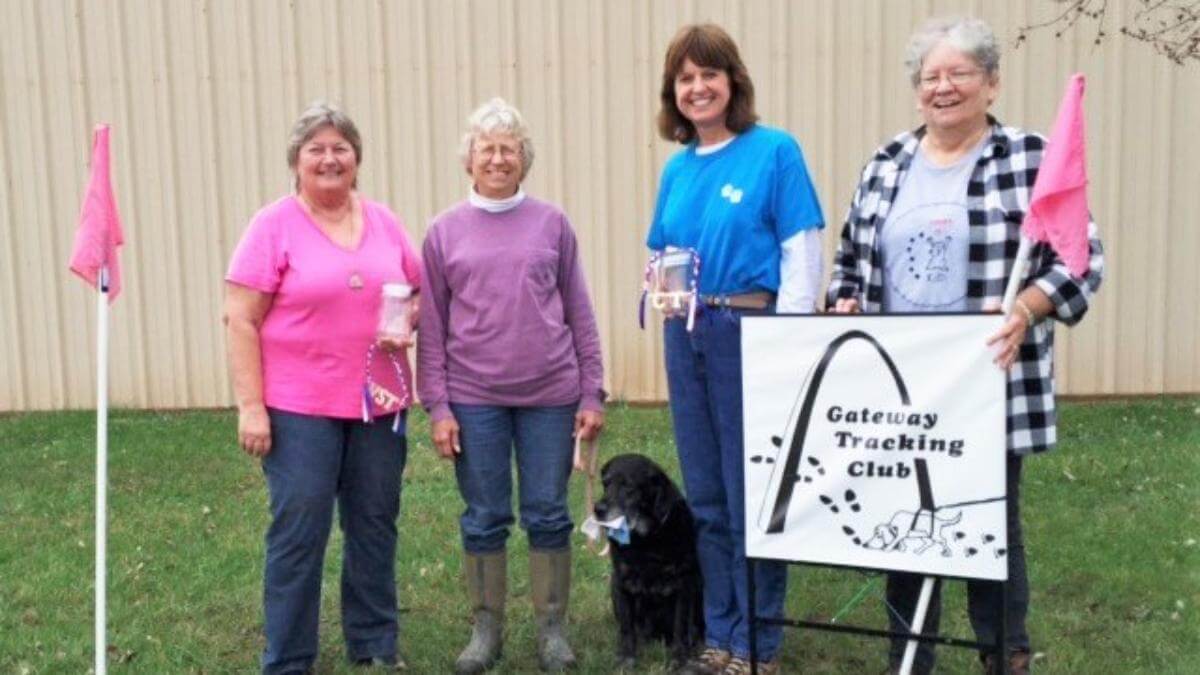
As winter sets in and pushes me out of field work, I switch to tracking my dogs in more comfortable environmental conditions than summer offers. I also have a litter at present, which reminds me of the fascination of watching puppies track. The following article was previously published in Front and Finish, but I thought a revised edition might be of interest here. Enjoy.
Many trackers talk among themselves about teaching their dogs how to track, but in all honesty, dogs don’t need our help learning how to follow a scent trail. Their experience begins in the whelping box where blind and deaf newborns can be seen crawling in Mom’s direction any time they are hungry, or cold, sniffing loudly and swinging their heads back and forth. After watching this behavior multiple times, I have developed the routine of tracking puppies as young as eight weeks with much success.
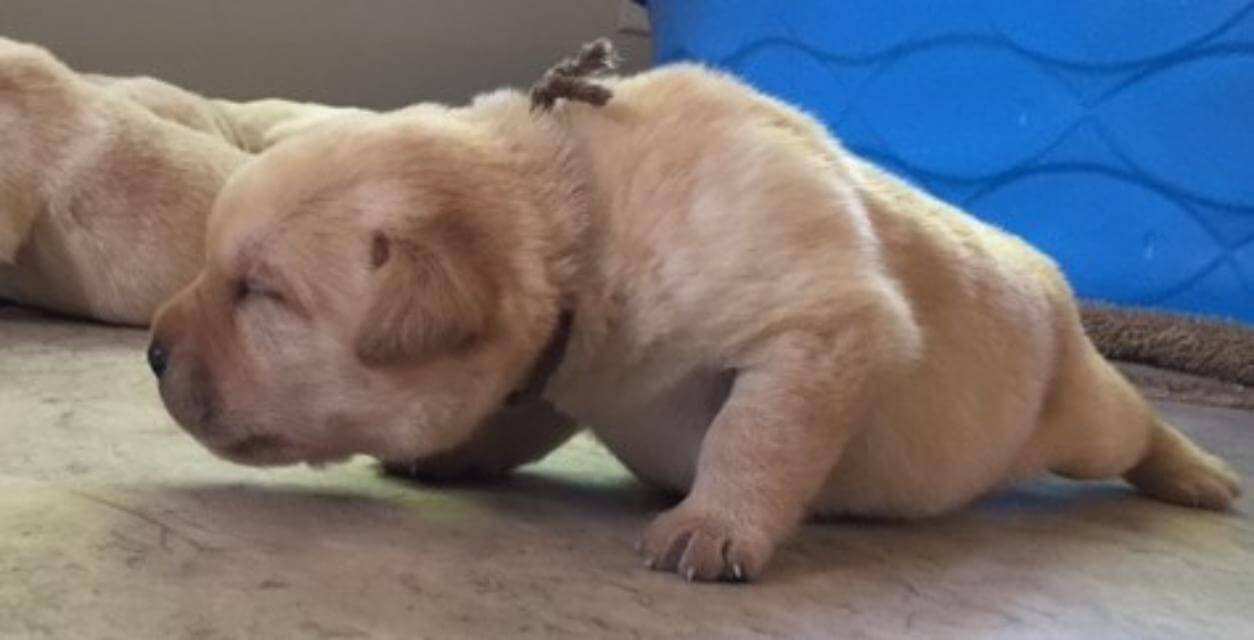
Since puppies have been tracking in the whelping box from birth, I capitalize on this skill and start my puppies as soon as the rest of the litter goes home. I like this plan, as puppies pick up AKC Tracking easily, as scenting has already played an important part in their young lives and was the dominant sense they relied on from birth. This sport is great for puppies, as it helps them to develop problem-solving skills and work as a team leader with its owner. Puppies gain confidence as they finesse their tracking skills and provide physical activity that dissipates puppy energy in a positive way. Besides, why not continue developing that scenting skill, since its use has played a major part in the puppy’s life.
Any type of training exercise offers puppies opportunities to learn how to learn and love it. Molding a puppy into a future performance dog is possible by starting early, using all positive and motivating techniques. It is not uncommon to watch puppies that start training early progress and certify by six months, ready to enter their first Tracking test. Most puppies I have worked with do well, but occasionally I will have one that just doesn’t seem to be able to stay focused at this age. So, I put them away for 2-3 weeks and have noted improvement.
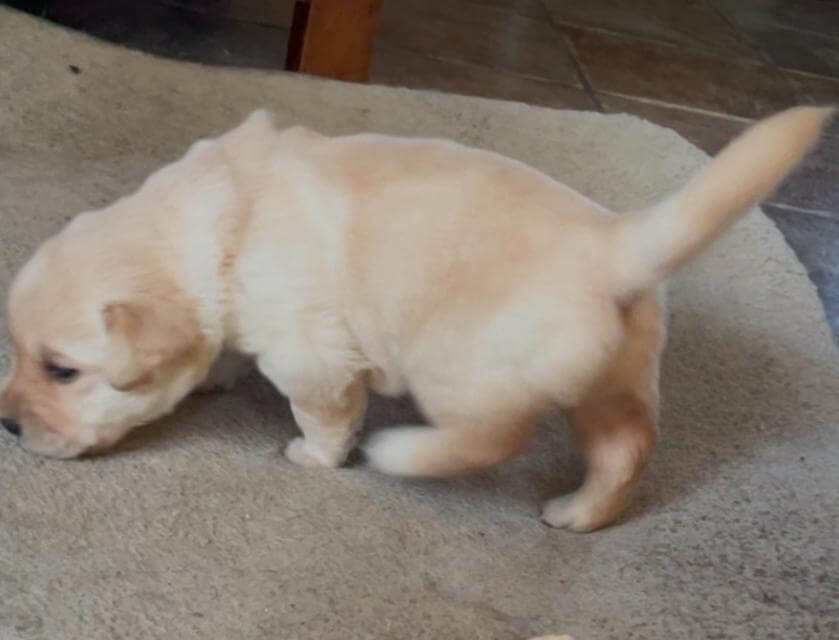
Here is one example (she is not the only puppy I have seen work this way) of an early tracking program and how well this young dog has done. Carly, a yellow Labrador Retriever, began tracking when she was eight weeks old. I co-owned her, so she tracked hit or miss between eight and ten weeks. She figured out the game right away and loved it. She would do short, straight-line tracks of up to 30 yards, initially watching the tracklayer. But after only three sessions, she would track readily without watching her tracks being laid. At 10 weeks, she ran a 17-minute-old 50-yard track, taking all of two minutes to find her glove. We tracked four times between January and April, progressing unbelievably. By April 19th, she was running tracks that were regulation age with three right angle turns that I did not “teach” but added to her tracks, letting her figure them out by herself. I then quit for the summer.
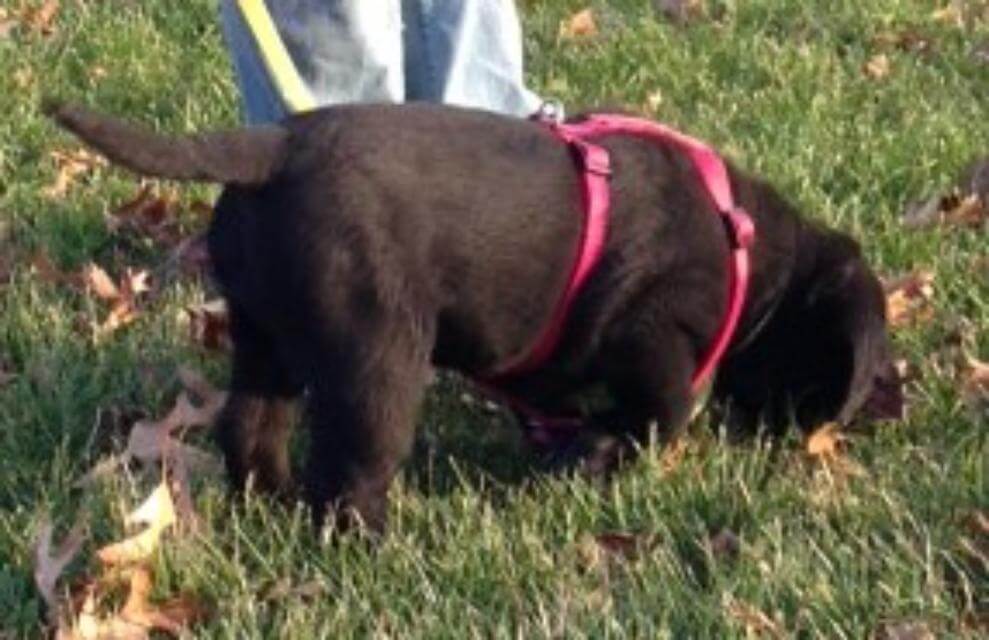
We resumed tracking in December and tried to certify in January. She was “off” and didn’t pass. We resumed practicing over the winter and, after six more training sessions, Carly passed a certification test. One month later, at 18 months, she got into a Tracking test where she literally ran a 455-yard track in six minutes. She titled after tracking 20 times over 14 months, despite breaks for Field work and Conformation events. I do not think this is an exceptional dog; I think she is a product of an early start, when tracking was a very natural thing for her to do. It was amazingly easy for her.
That was not my first experience with a puppy tracking unbelievably well, so with spring coming and lots of new puppies beginning careers, here are some ideas to help you achieve the same success with a puppy that is a prime candidate for tracking—even as a little one.
When I start a puppy, the first thing I do is play “Get it” games with an article such as a glove or sock that I intend to use when we track. I want the puppy to love that article for the fun it represents. I throw it short distances, get the puppy to chase it, and then celebrate when the puppy brings it back. Not all puppies return with the article; some may run away with it, some may run back and then past me. If I have trouble getting the puppy to come back to me, I play our game in a hallway with all the doors closed and give him no option but to come back to me. When he does, I grab the puppy, not the article, as I want the pup to “own” it for a while and to be praised for coming. I love to make a big deal about the return so that the game is about us playing together.
I want him to understand how much his actions please me, and thus, learn to love to work together. If I grab the article instead of the pup, the pup learns either that I am taking it away immediately (so why bring it back?) or he learns to drop it as soon as he arrives. These play sessions are short because pups tire easily and I don’t want him to lose interest. I would rather stop early with a pup that wants more rather than one that is tired of our game. My purpose here is simply to build interest in the article, create excitement to work with me, and motivate him to find that article.
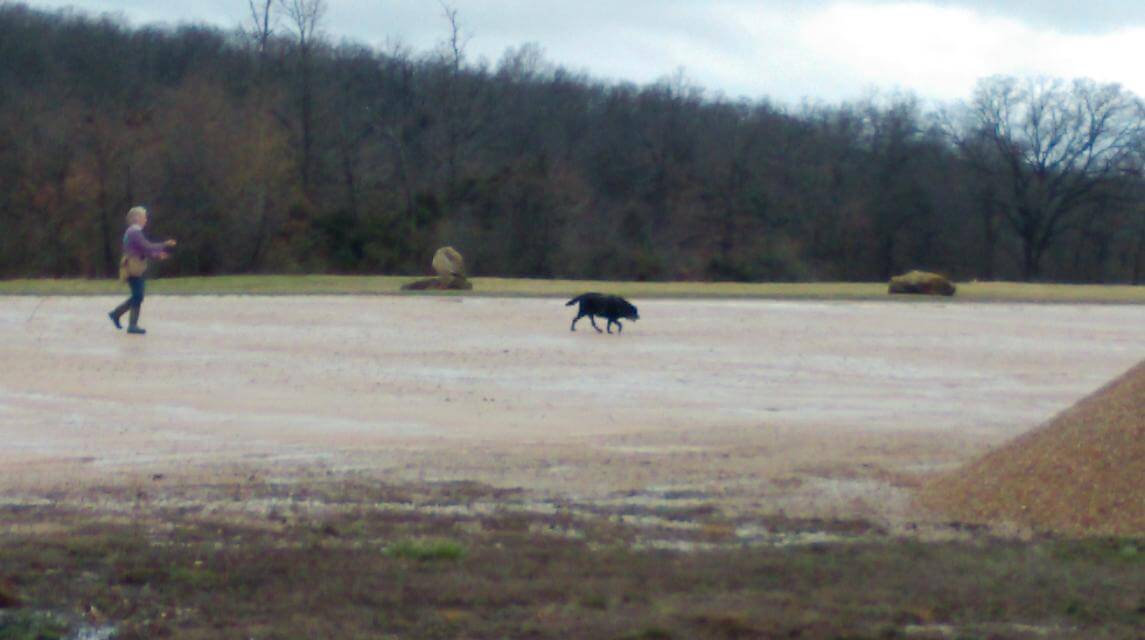
Sometimes puppies don’t have any interest in the article you choose, so you may need to be creative when you choose an item that will be motivational for your puppy. Some may have a favorite toy, a ball, a water bottle, or even an old sock. It doesn’t matter what it is, as anything will work. Once you identify something, keep that item special and put it away to be gotten out just for the “Get it” game. Food works too, especially if you play around mealtimes. You can take small pieces of a high-value treat, put it into the article you are wanting the pup to track in the future, and toss it a short distance. Help the puppy get the article and bring it back to you so that you can get the food out of the article for the pup. Stay close to the pup so that the glove is not eaten. If you do this activity when the pup is young, this shouldn’t be a problem. If you are trying this with a large, older puppy, you might be wise to put a leash on him to help yourself control his movements after he picks up his article. You could avoid this problem by using a large piece of fabric that the pup can’t swallow. Use the leash to guide the puppy back to you if he doesn’t come on his own. Give him the treat and repeat. Again, keep the sessions short. You are ready to move on when the puppy seems to understand that the article you have chosen is fun and he wants it.
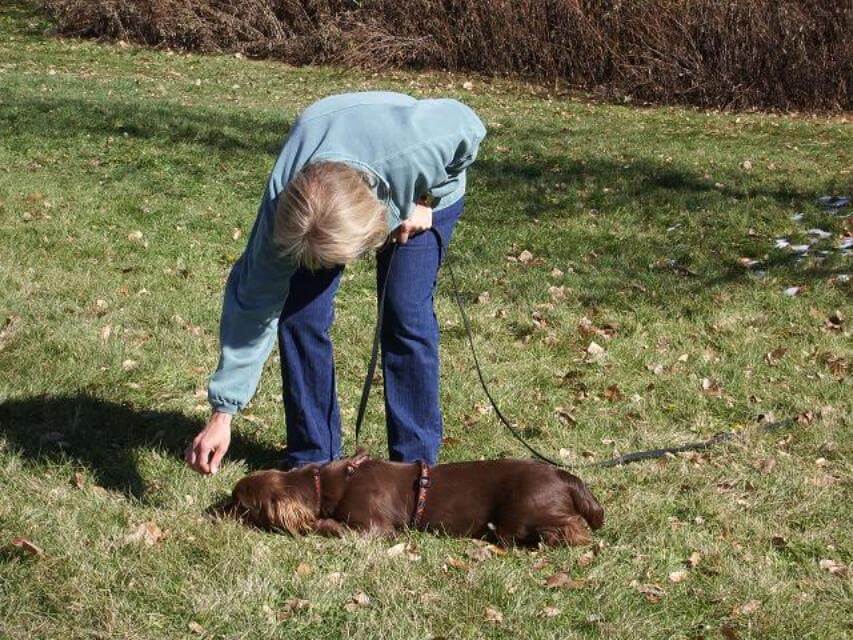
If your pup’s motivator and tracking article are not the same item, the next step is to build an association between the two. After playing the “Get it” game enough so that the pup understands and loves the game, get a fabric tracking glove, put the special item in the glove, and repeat the “Get it” game with the puppy until the puppy is just as excited about getting this fabric glove as he was his motivator. Make sure the puppy sees his special toy being placed into the glove, and consider letting part of it hang out of the tracking glove. You are ready to move on when the puppy seems to be just as excited about the tracking glove and his motivator as he was for the motivator alone.
At this stage, I am ready to start tracking my puppy. I have someone help me at first, because this step demonstrates to the puppy that his special article, motivator or tracking glove, is out there and visible for him to go “get,” but this time without a throw. In this introductory method, one of us holds the dog while the other takes the motivator and begins laying a track at a typical start flag. The person holding the puppy is helping the puppy to pay attention to the “tracklayer.” Every five steps, have the tracklayer turn around, wave the beloved object at the puppy and call the dog’s name to get his attention and to tease him with his treasure. For small dogs, I lay a track that is 10-20 yards; large dogs, 20-30 yards. At the end of the leg, have the tracklayer turn around and again show the puppy the article. Call his name to make sure he is looking and let him watch the article being placed on the ground. The tracklayer should then walk straight ahead another 20-30 yards and then make a big loop around to the start of the track. Once the tracklayer is back to the start, the dog may begin his search for his prized possession.
His search at this point may be mostly visual, and that is fine. As the track gets longer, such that the article is no longer visible. The natural thing for puppies and dogs to do is switch to their nose. It is not unusual for him to need encouragement to keep looking, and that is fine. But once he finds his treasure, throw a party, as the puppy needs to know that he is brilliant and that you are “out of your mind” happy with him. At this point, I like that party to include the “Get it” game that he has learned to love when all this motivational stuff began. If you use food, make sure he gets his treats at the glove. If you use a favorite toy, make sure he gets to play with a short toss or two as a reward for a job well done. In general, I like to repeat this short track a total of three times per training session and will ask my tracklayer to lay two more tracks in a clean or different area and repeat the same process. The lengths of tracks two and three depends upon how the puppy did with his first track that day. Any time the puppy does well, I add 5-10 yards for small pups or 10-20 yards for large ones. If the pup struggles, I may keep the length the same or even shorten it. The idea is to help the puppy succeed.
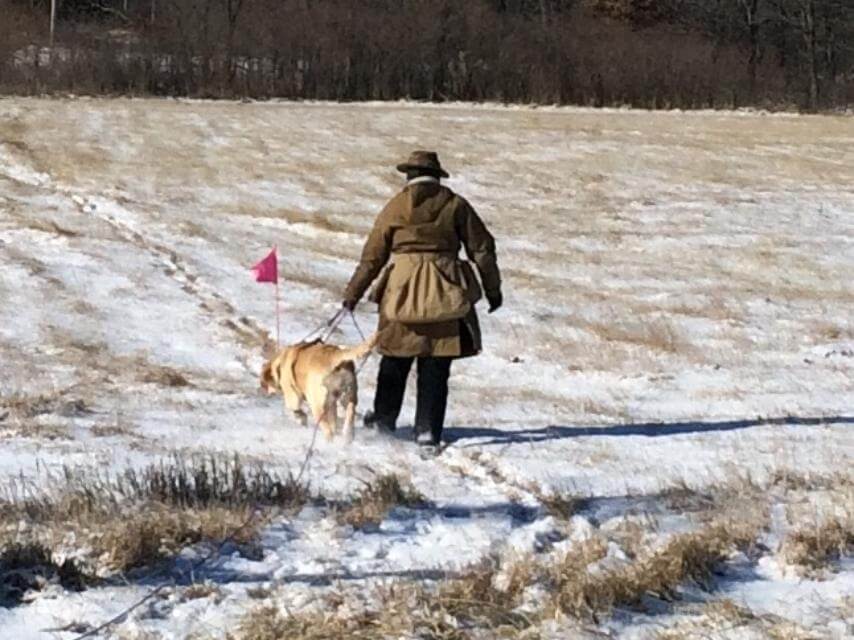
Once your puppy seems to understand that the flag, harness, and tracklayer mean there is something out there for him to find, I no longer let the puppy watch the tracklayer. Matter of fact, from here on until I am ready to certify, I prefer to lay my own tracks, which helps me learn to read my dog. I start again with short tracks that are aged between 10-15 minutes, as now the puppy will be forced to use his nose rather than his eyes to find his treasure. If he is struggling, I pat the ground and tell him to “Find it”, “Get it” or “Track.” Most puppies switch to using their noses pretty easily and will follow a fresh scent trail to find an article. Once the puppy has found his article, party hardy, play, and give him his treats.
My favorite motivator is food. Labradors, you may or may not know, are truly chow hounds, so it has always worked for me. I like using food because I can place it in many spots along a track to reinforce the decisions my tracking dogs are making as they work. I can use as little or as much food on a track as needed depending upon what we are practicing. As with any other venue, food has to be faded gradually to avoid having a dog give up if he doesn’t find food in the time he expects to do so. Once faded gradually, the lack of food can become a greater motivator, as the dog is certain that there will be food just ahead. If you decide to use food, track your dog before he eats; no one is motivated to work for food when they aren’t hungry. Secondly, choose food with high value and use it only for tracking. Working for the same old kibble may work, but watch what happens when that treat becomes chicken, liver treats, hot dogs, or some such doggy delicacy. If you decide to use food, you can jump-start a dog by smearing hot dogs (or something as gooey) onto the tracklayer’s feet so that he is laying a track that is very attractive to the dog. Using this method really helps to get a dog to put his nose down to search for more. I caution you to use this trick for the first 3-4 tracking sessions only. Prolonged use of food on the feet will make a dog too dependent upon the notion that the only trail to follow is food. I also put tiny food drops down on the track as it is laid to reinforce the pup’s efforts. At first, I may place food in every footfall for small dogs or every other footfall for larger ones. As soon as I see the puppy following the food trail, I begin to space it farther and farther apart so that the pup has to do more work before it is rewarded. Besides, excess food on a track distracts and slows down a puppy. Use it as a reward but not a crutch.

Off you go to start your puppy. Have fun. I’m yearning to start another baby, but please don’t tell me husband!
